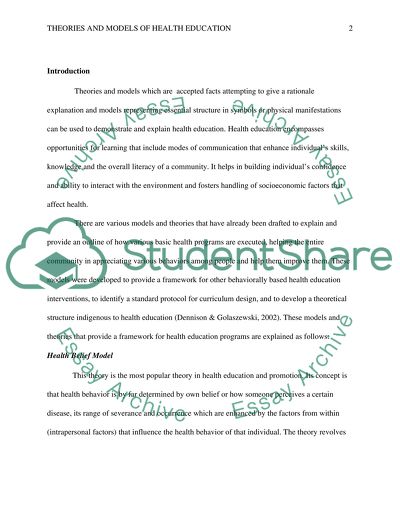Theories and Models of Health Education Assignment. Retrieved from https://studentshare.org/health-sciences-medicine/1472677-theories-and-models-of-health-education
Theories and Models of Health Education Assignment. https://studentshare.org/health-sciences-medicine/1472677-theories-and-models-of-health-education.


